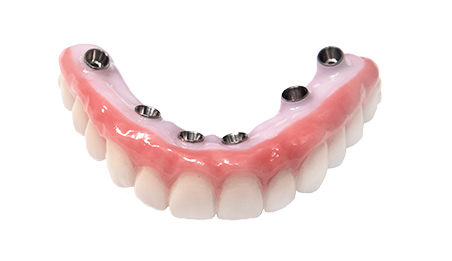Some Known Facts About Dental Sense.
Some Known Facts About Dental Sense.
Blog Article
The Facts About Dental Sense Uncovered
Table of ContentsDental Sense for DummiesFascination About Dental SenseThe Basic Principles Of Dental Sense A Biased View of Dental Sense
are medical tools operatively dental implanted right into the jaw to recover a person's ability to eat or their look. They give assistance for man-made (phony) teeth, such as crowns, bridges, or dentures. When a tooth is lost as a result of injury or disease, an individual can experience difficulties such as fast bone loss, malfunctioning speech, or modifications to chewing patterns that lead to discomfort.Dental implant systems contain a dental implant body and oral implant joint and might likewise consist of an abutment addiction screw. Dental veneers cost. The dental implant body is operatively inserted in the jawbone instead of the tooth's root. The oral implant joint is normally attached to the dental implant body by the joint addiction screw and expands with gums into the mouth to support the connected synthetic teeth
(https://www.huntingnet.com/forum/members/dentalsense1.html)Structure of The Dental Implant System picking dental implants, speak to your dental copyright regarding the possible advantages and risks, and whether you are a prospect for the treatment. Points to think about: Your overall health and wellness is an essential consider determining whether you are a good candidate for dental implants, the length of time it will take to recover, and how much time the implant might stay in place.
Smoking cigarettes might impact the recovery procedure and reduce the long-term success of the dental implant. The recovery process for the dental implant body may take numerous months or longer, throughout which time you usually have a short-lived joint in area of the tooth. the dental implant procedure: Meticulously follow the oral hygiene directions offered to you by your oral service provider.
Dental Sense Fundamentals Explained
Implant failing can result in the demand for another surgery to fix or replace the dental implant system. Restores the capacity to eat Restores aesthetic appearance Helps keep the jawbone from diminishing because of bone loss Maintains the health of the bordering bone and gums Aids maintain adjacent (close-by) teeth stable Boosts top quality of life Damage to bordering natural teeth throughout implant positioning Injury to the surrounding cells throughout surgery, such as sinus perforation Injury during surgery (as an example, fracture of surrounding jawbone) Insufficient function, such as seeming like the teeth do not bite with each other typically An experience that the tooth is loose or twisting in place arising from a joint screw loosening Implant body failing (looseness of the implant body) as a result of systemic infection, which might be more probable in people with unchecked diabetes due to regional infection in bone and gum tissues supporting the implant body because of postponed healing, which may be much more likely in individuals who smoke Trouble cleaning the periodontals around the implant, leading to inadequate dental hygiene Untreated periodontal disease Post-surgical feeling numb because of nerve impingement or damage Always inform healthcare suppliers and imaging service technicians that you have dental implants before any magnetic vibration imaging (MRI) or x-ray procedures.
FDA is not familiar with any adverse occasions reported for MRI or x-ray procedures with dental implants. Oral implants systems are typically made from products that comply with global agreement standards of the International Company for Standardization (ISO) or ASTM International. These requirements have details of what makes a risk-free product.

A dental implant is a structure that changes a missing out on tooth. With screw-like tools, the surgeon inserts an implant right into the jawbone, and it serves as an anchor for a fabricated tooth, called a crown. A gadget called an abutment connects the fabricated tooth to the dental implant. The crown is tailor-made to fit the person's mouth and match the color of their teeth.
Dental Sense - Truths
Some individuals are not eligible for dental implant surgery. It is for dental cosmetic surgeons to run on people with: severe illnessuncontrollable metabolic diseasebone or soft cells illness or infectionIf these issues are fixed, a person can have the surgery. In, oral cosmetic surgeons avoid running on individuals with: If individuals with any one of the above undergo oral implant surgical procedure, there is a higher risk of the implant falling short.

Oral implant surgery is a personalized procedure. It's not the very same for everybody. Yet the complying with offers a general overview of what you can expect your dental professional, dental specialist, periodontist or prosthodontist to do: Place the implant operatively. Give you time to heal. Connect the article and last crown, bridge or denture.
Next, your doctor will meticulously click site put the oral implant into your jaw. If your dental implant is near the front of your mouth, your dental practitioner will certainly make a momentary tooth for you to put on up until you heal.
The Main Principles Of Dental Sense
Your service provider can inform you what to anticipate in your circumstance. During the recovery stage, your jawbone should fuse to the oral implant. This process, called osseointegration, is critical for stability and lasting success. This process can take anywhere from 3 to nine months. In some instances, it might take longer.
Once your dental implant heals, your dental professional can attach the joint (little port message) and your last restoration (crown, bridge or denture). This usually takes about one hour to complete and may need a second minor surgery. You should not feel any type of pain throughout your dental implant procedure since your supplier will certainly use medicine to numb your gums.
Report this page